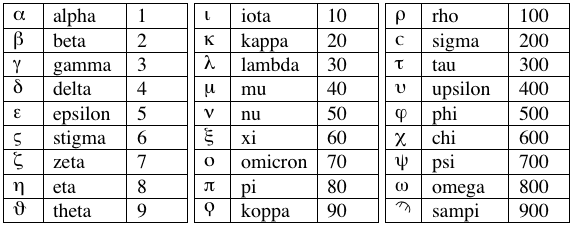
Example 1 - Romans

Example 2 - Ephesians
 Example 1 - Romans |
 Example 2 - Ephesians |
Stichometric notes, such as the ones shown above, can be found throughout the Pauline codex. They appear at the end of each epistle, noting the number of lines that the previous epistle contained. This was a way for the bookmaker to keep track of how many lines of text the scribe had written (and thus how much to charge for the codex). It is interesting to note that throughout this codex, the number of lines reported for each epistle is higher than the number of lines reported in other copies of the same text. This may suggest that someone was padding the numbers in order to charge more money!
Example 1 shows a typical stichometric note, which reads ϲτιχ ’Α. The χ is raised, following the normal convention for raising the last letter of an abbreviation (here, the abbreviation is for ϲτίχοι, "lines"). The symbol which follows is the number one thousand, which was typically represented by an alpha with an extra stroke. Thus the scribe is recording 1,000 lines for the Letter to the Romans. Example 2 reads ϲτίχ(οι) τιϛ. By consulting the table below, one can see that the scribe has recorded 316 lines for the Letter to the Ephesians.
